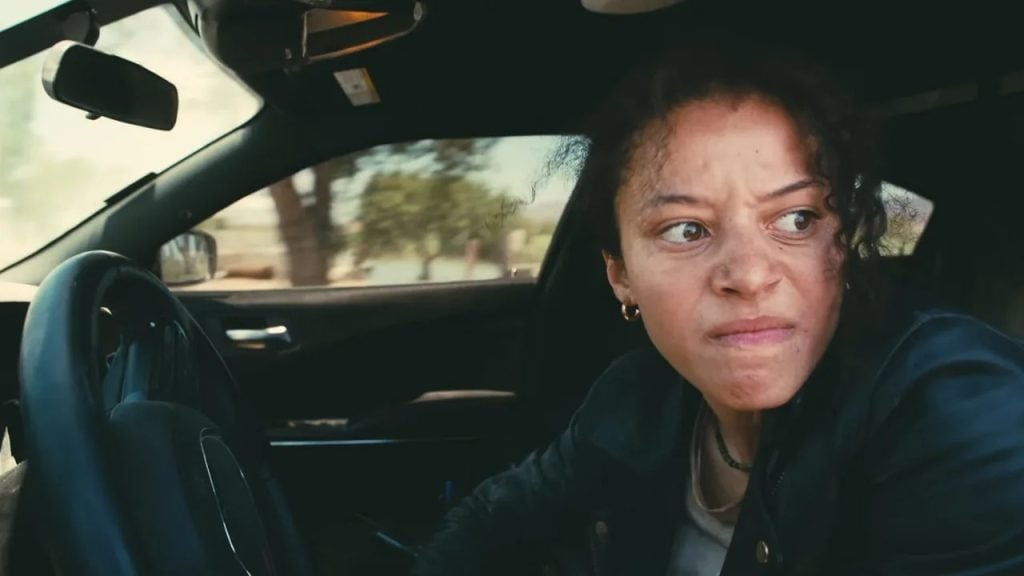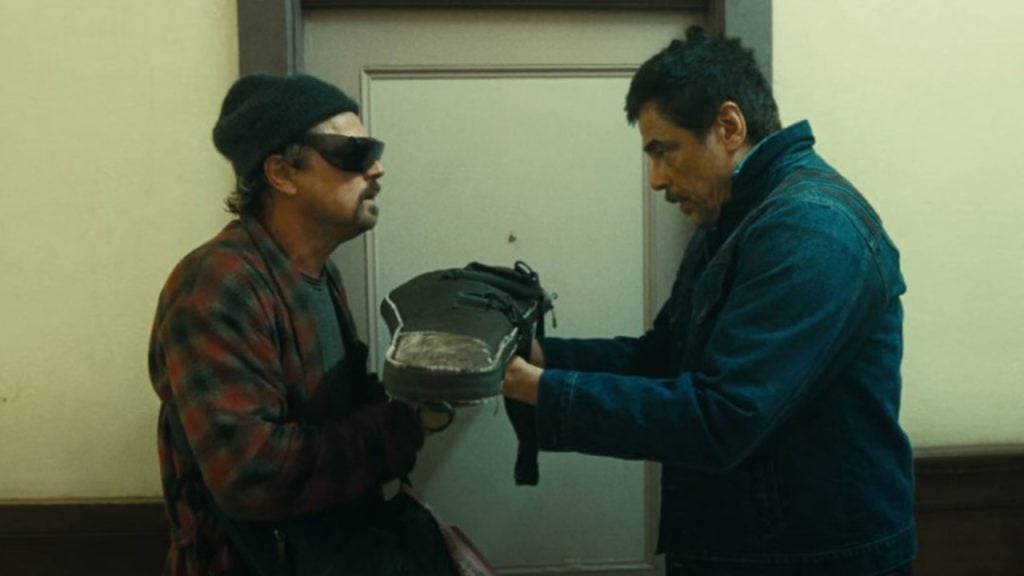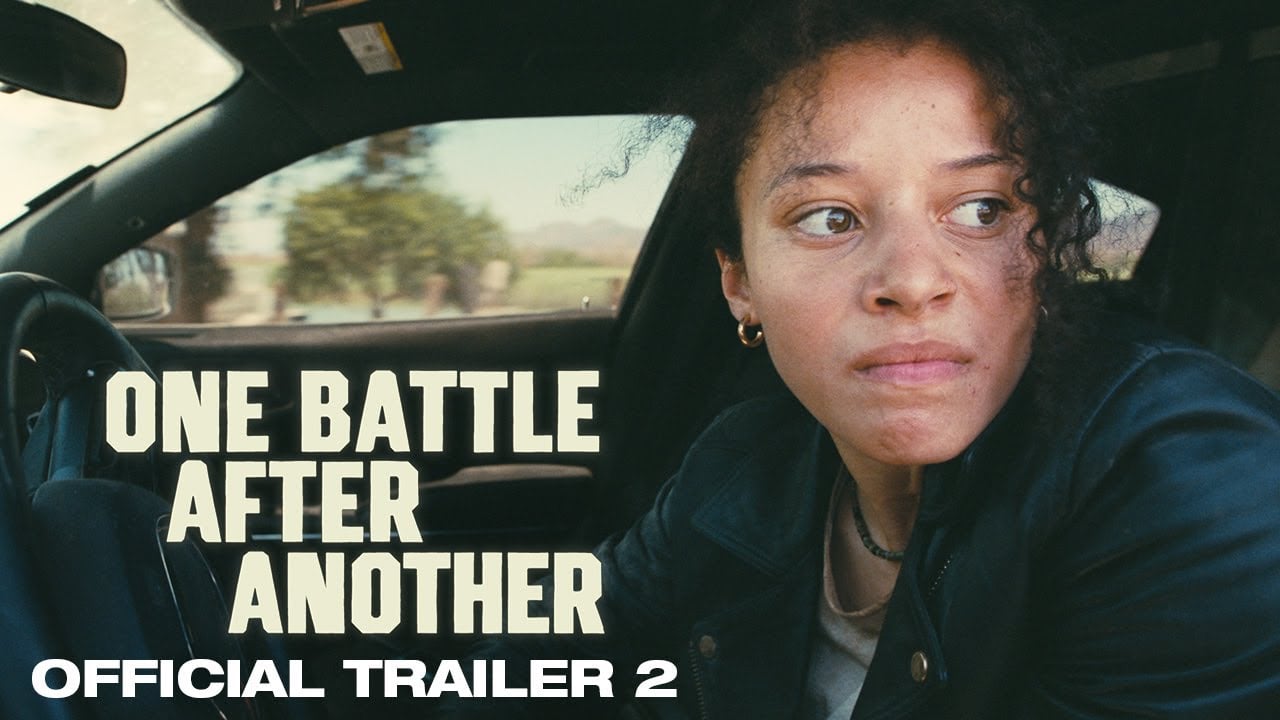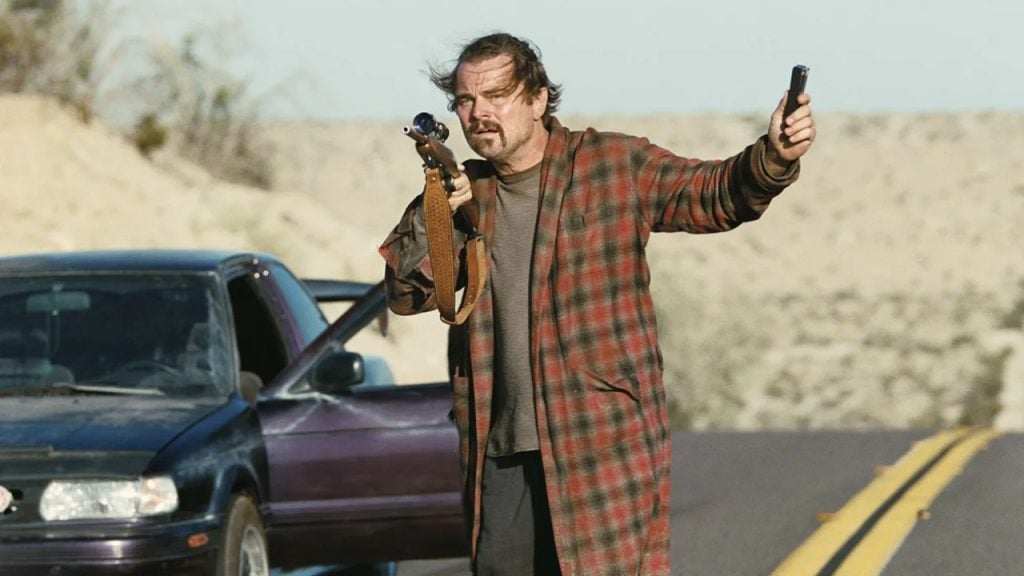“Freedom: when you have it, you don’t appreciate it, but when you miss it, it’s gone.” It’s not only a feeling many of us have felt lately, but it’s also a line out of the latest Paul Thomas Anderson (Magnolia) movie. One Battle After Another is a pitch-black comedy that delivers sharp social critique, dark humour, and a visionary narrative approach. Adapted from Thomas Pynchon’s best-selling novel Vineland, the feature shines a bright light on America’s unravelling and the marginalised underbelly of society.
Set mainly in the hills and the outskirts of California, the movie opens with the heart-pumping rescue mission of the revolutionary group French 75, led by its fierce leader Perfidia Beverly Hills (Straw’s Teyana Taylor). Their twofold goal is to take the officers hostage and to free the immigrants waiting to be processed at the Mexico-U.S. border. Yet, Perfidia takes it one step further. Before leaving the base, she humiliates Colonel Steven J. Lockjaw (Sean Penn), who despises Black women, by asserting her dominance in a sexually mortifying manner.
This encounter sets the entire film in motion as it leads to Lockjaw’s unhealthy obsession with Perfidia and Penn’s (Daddio) finest work in ages as the epitome of a power-hungry man. While the racist monster in him sees Perfidia as trash, Lockjaw also deep down likes the psychosexual dominance she has over him. It even leads to him stalking Perfidia and her family, Bob (Leonardo DiCaprio) and Willa (Chase Infiniti).

Fast forward 16 years. Bob is now a single father with a teenage daughter. While the loss of Perfidia tore the family apart, it was actually a blessing for this film, as Bob and Willa grew close together, leading to spectacular chemistry between DiCaprio (Titanic) and Infiniti. While the former gives a delicate balance performance as a man who passionately supports the revolution, knowing that his true loyalty and heart lie with his daughter, the latter delivers one of the most extraordinary debuts we’ve seen in a long time. As the on-screen father and daughter, they must face Lockjaw’s violent manhunt. This results in Willa being rescued by French 75 member and Perfidia’s former ally Deandra (Regina Hall) and Bob securing help from Sensei Sergio St. Carlos (Benicio del Toro).
As soon as Bob and Sergio cross paths, the movie centres on a father finding his lost daughter after they become separated due to terrible events. From then onwards, the plot simplifies (unlike the passwords Bob’s need), and There Will Be Blood‘s Jonny Greenwood score truly becomes the driving force behind this feature. Whether it’s the single piano key, the hair-raising strings, or the fast beating drums, each instrument underlines the mounting dread, the characters’ fight-or-flight responses, and the urgent nature of the events happening most effectively.
Even when the filmmaker takes the bold, risky acts of rebellion down a notch, there’s always an unnerving and anxiety-inducing energy running through the scenes. Whether it’s Bob with a cigarette in his hands contemplating how he can contribute to the revolution while keeping his daughter safe, Lockjaw ferociously staring in the eyes of his enemy, or Willa finding that little bit of joy in a dark world, the film never loses its momentum, even during the quieter scenes. It might take a while before things get underway, but once the filmmaker lights the fuse underneath One Battle After Another, it’s cinematic fireworks for the next 162 minutes.

That’s not only because of the award-deserving performance, but also because this is once again a breathtaking collaboration between Anderson and Licorice Pizza cinematographer Michael Bauman. They decided to shoot this work in Vistavision. While many films might not fully reap all the benefits from this wider aspect ratio and the sharper, more detailed visuals, this one absolutely does. Throughout the lengthy runtime, you see flashes of David Lean and John Ford, but most importantly, you witness the Andersons’ incredible craftsmanship. That car chase towards the end isn’t the flashiest one and might be a tad too long, but it truly shows us the filmmaking daring vision and ultra-creative cinematic approach. The desolate desert hills become an extra character and, together with the present, compelling, and slightly bonkers score, that cat-and-mouse scene turns into a brilliantly crafted dramatic showdown.
Due to the nature of the story, this feature could have easily become a one-sided critique, but Anderson avoids that trap beautifully. The grounded portrayal of the timeless social commentary mainly draws on the rich character development and is amplified by the filmmaker’s incredible flair for compelling storytelling. The movie depicts what history classes can’t teach us, what the media doesn’t show us, and what censorship conceals from the world, nothing more, nothing less. Anderson might not refer to specific terms or events that have been all over the news lately. Still, you instantly understand that this social realist movie about fighting, uprising, and rebellion is as contemporary as ever. The timeless screenplay could have taken place in the past, present, or future without losing its impact, meaning, or authenticity.
After all is said and done in One Battle After Another, deep down, this movie is mainly about the complex characters Anderson created, his visually stunning filmmaking, and even the sliver of hope and optimism in a society that becomes gloomier by the day.

After all is said and done in One Battle After Another, deep down, this movie is mainly about the complex characters Anderson created, his visually stunning filmmaking, and even the sliver of hope and optimism in a society that becomes gloomier by the day.
-
GVN Rating 8.5
-
User Ratings (0 Votes)
0





![‘Jay Kelly’ Review – Noah Baumbach Makes A Case For The Magic Of Movie Stardom [NYFF 2025] ‘Jay Kelly’ Review – Noah Baumbach Makes A Case For The Magic Of Movie Stardom [NYFF 2025]](https://cdn.geekvibesnation.com/wp-media-folder-geek-vibes-nation/wp-content/uploads/2025/11/Jay-Kelly-JKELLY_20240523_15320_C2_R-300x180.jpg)

